Shreemad Bhagavat Mahapuran- Canto: 5, Chapter: 20
Shree Shukdevji had previously narrated the fascinating account of Manu's son Priyavrat, who, upon observing that only half of Bhulok (the earthly plane) was illuminated by sunlight while the other half remained in darkness as Suryadev circled Mount Sumeru, felt deep dissatisfaction. Unable to bear this imbalance, Priyavrat resolved to "turn night into day." With unwavering devotion and divine strength, he ascended a radiant chariot as swift and brilliant as the Sun itself. Like a second Sun, he circled the entire Bhulok seven times, bringing light to every corner of the world.
Due to his profound devotion to God, Priyavrat's divine power had greatly increased. As the wheels of his chariot moved, they carved deep tracks, which became the seven great seas. These seas divided the Bhulok into seven islands (dweeps) named Jambu, Plaksha, Shalmali, Kusha, Krauncha, Shaka, and Pushkara.
Each successive island was twice the size of the previous one, and the seas surrounded them, stretching outward in concentric circles. The seven seas were filled with different substances: salty water, sugarcane juice, wine, ghee, milk, curd, and sweet water. These seas served as moats encircling the islands, with each sea equalising the island it surrounded.
Shree Shukdevji then goes on to describe the other islands of the Earth in detail to Parikshit.
Jambudweep
Jambudweep is the place where we reside. It is the innermost island in the seven islands of Bhulok, spread over an area of one lakh yojanas. Its shape is circular, resembling a lotus petal. It consists of a total of nine divisions (varshas), each covering an area of nine thousand yojanas. These divisions are separated by eight mountains, dividing the land into distinct parts. Among these nine varshas, Ilaavrit Varsh is the most prominent and sacred, as the divine Mount Meru is situated in its centre. Numerous sacred rivers flowing from Mount Meru irrigate the entire Jambudweep with life-giving waters.
Excluding Bharatvarsh, the other varshas are described as the heaven of the earthly realm. The inhabitants there live a divine life, akin to the Treta Yuga, where beauty, power, and joy flow perpetually. The picturesque valleys, abodes, forests, gardens, and trees laden with flowers are beautifully arranged for the gods' residence. The water bodies with blooming lotuses and the sweet chirping of birds fill the atmosphere with divinity.
In these varshas, Bhagwan Narayan resides in His various forms, showering His grace upon the inhabitants. The nine varshas of Jambudweep are Ilaavrit Varsh, Bhadrashv Varsh, Harivarsh, Ketumal Varsh, Ramyak Varsh, Hiranyamay Varsh, Uttar Kuruv Varsh, Kimpurush Varsh, and Bharat Varsh.
Plakshdweep
Just as Jambudweep surrounds Mount Meru, similarly, Jambudweep is encircled by a saline ocean of the same size and extent. As a garden is found around a trench, this salty ocean is surrounded by Plakshdweep, which is twice as large. In Jambudweep, there is a massive Jamun tree, and similarly, there is a huge Plaksh (Pakar/ Ficus virens) tree here, shining like gold, which is why it is called Plakshdweep. On this island, the fire god with seven tongues resides. The king of this island, Maharaj Priyavrat's son Idhmajihv, divided the land into seven parts, which he entrusted to his seven sons, and he himself became engrossed in devotion.
These seven varshas are Shiv, Yavas, Subhadra, Shant, Kshem, Amrit, and Abhay. In each Varsha, there are seven famous mountains, and seven rivers: Manikoot, Vajrakoot, Indrasen, Jyotishman, Suparn, Hiranyashtiv, and Meghmal are the seven mountains, and Aruna, Nrinmna, Angirasi, Savitri, Suprabhat, Rithambhara, and Satyambhara are the seven rivers.
There are four varnas here: Hans, Patang, Urdhvayan, and Satyang. Bathing in the waters of these rivers gradually destroys the rajogun and tamogun in people. The people here live for a thousand years, and their bodies, like those of the deities, remain free from fatigue and perspiration. All of them worship and praise Bhagwan Surya (the Sun God). People born in Plakshdweep and the other five islands have the same lifespan, strength of senses, mental strength, physical power, intellect, and courage.
Shalmali Dweep
Plakshdweep is surrounded by a sea of sugarcane juice, which is the same size as the island. Beyond this lies Shalmali Dweep, which is twice as large and is encircled by a sea of wine. Just as there is a huge Plaksh tree in Plakshdweep, there is an equally large Shalmali (Semar/ Bombax ceiba) tree in Shalmali Dweep. It is said that this tree is the residence of Garud, the king of birds, who worships Bhagwan with his Vedic wings, and because of this, the island is named Shalmali Dweep.
The king of this island, Maharaj Priyavrat's son Yajnbahu, divided it into seven parts and entrusted them to his seven sons. The names of these parts are Surochan, Saumansya, Ramanak, Devvarsh, Paribhadr, Apyayan, and Avignat. On this island, too, seven mountains and seven rivers are well-known. The seven mountains are Svaras, Shatashringa, Vamdev, Kund, Mukund, Pushpvarsh, and Sahasrashruti. The seven rivers are Anumati, Siniwali, Saraswati, Kuhu, Rajani, Nanda, and Raka. Four varnas reside on this island: Shrutadhar, Viryadhar, Vasundhar, and Ishandhar. All of them worship Chandra (the Moon God) through Vedic mantras and sing hymns in His praise.
Kushdweep
Beyond the sea of wine lies Kushdweep, which is twice as large and surrounded by a sea of ghee, just like the previously mentioned islands. On this island, there is a bush made of kush grass (Halfa grass), created by Bhagwan, which is why it is named Kushdweep. Its soft tips are so radiant that, like the fire god, they continuously illuminate all directions with theirbrilliance.
The king of this island, Maharaj Priyavrat's son Hiranyareta, divided the island into seven parts and entrusted them to his seven sons – Vasu, Vasudan, Dhridhruchi, Nabhiputra, Stutyavrata, Vivikt, and Vamdev, and he himself became engrossed in meditation. This island has seven mountains and seven rivers that define its boundaries. The seven mountains are Chakra, Chatushringa, Kapil, Chitrakoot, Devanik, Urdhvaroma, and Dravin. The seven rivers are Rasakulya, Madhukulya, Mitravinda, Shrutavinda, Devgarbha, Ghritachyuta, and Mantrmala.
By bathing in the waters of these rivers, the residents of Kushdweep – the four varnas named Kushal, Kovid, Abhiyukt, and Kulak – worship Bhagwan Hari, the fire-like deity, through yajnas and other religious practices.
Kraunchdweep
Beyond the sea of ghee lies Kraunchdweep, which is twice as large and surrounded by a sea of milk, just like how the sea of ghee surrounded Kushdweep. On this island, there is a massive mountain named Kraunch, which is why it is called Kraunchdweep. In ancient times, the central part of this mountain, along with its vines and forests, was destroyed by the weapon strikes of Shree Swami Kartikeyaji. However, after being irrigated by the Ksheersamudra (sea of milk) and protected by Varundev, it became fearless once again.
The king of this island, Maharaj Priyavrat's son Ghritprishth, divided the island into seven parts and entrusted them to his seven sons – Aam, Madhuruh, Meghprishth, Sudhama, Bhrajishth, Lohitarn, and Vanaspati, and he himself embraced renunciation. There are also seven famous mountains and seven rivers in these seven regions. Shukl, Vardhman, Bhojan, Upabharhin, Nand, Nandan, and Sarvatoabhadra are seven mountains. The seven rivers are Abhaya, Amritaugha, Aryaka, Tirthavati, Vrittirupvati, Pavitrawati, and Shukla.
The residents of this island, who consume the pure and holy waters of these rivers, are divided into three varnas: Rishabh, Dravin, and Devak. They worship the water deities and express their reverence towards them.
Shakadweep
Beyond the sea of milk lies Shakadweep, which is twice as large and surrounded by a sea of curd. As previously described islands are surrounded by their respective seas. This island contains a massive tree named Shak, whose incredibly delightful fragrance fills the entire island. This tree is the reason for the island's name.
The ruler of this island, Maharaj Priyavrat's son, Maharaj Medhatithi, divided it into seven regions and entrusted them to his seven sons, each named similarly to the island—Purojv, Manojv, Pavman, Dhoomranik, Chitreref, Bahurup, and Vishwadhar. After this, he himself became devoted to Bhagwan Anant (Sheshnaga) and went to a secluded place for penance.
This island also has seven famous mountains and seven rivers. The seven mountains are Ishan, Urushring, Balbhadra, Shatkesar, Sahasrasrot, Devpal, and Mahanas. The seven rivers are Anagha, Ayurda, Ubhayasprashti, Aparajita, Panchpadi, Sahasrasruti, and Nidhriti.
The residents of this island are divided into four varnas: Ritvrat, Satyavrat, Danvrat, and Anuvrat. Through pranayama, they diminish their rajas and tamas qualities, and by engaging in deep meditation, they worship Vayurup Shree Hari.
Pushkardweep
Pushkardweep is the largest of all the islands, situated beyond the sea of curd and surrounded by an ocean of sweet water. In the very centre of this island is a vast golden lotus (Pushkar), with millions of radiant petals glowing like flames of fire. This radiant lotus is why Pushkardweep is considered the seat of Brahmaji.
At the heart of the island stands the massive Mansottar mountain, which divides the island into eastern and western parts. This mountain, ten thousand yojanas high and equally long, is a central feature of Pushkardweep. In all four directions of Mansottar are the four cities of the Lokpals, including those of Indra and others. Above this great mountain, the chariot of the Sun revolves around Mount Meru, cycling through the Uttarayan and Dakshinayan, which govern the day and night for the devatas.
The ruler of Pushkardweep was Maharaj Priyavrat's son, Vītihotra. He appointed his two sons, Ramanak and Dhataki, to govern two separate parts of the island while he himself immersed himself in devotion. The residents of this island worship Brahmswarup Bhagwan Shree Hari, seeking to attain Brahmlok (the realm of Brahmaji).
The distance between Mount Meru and Mansottar is equivalent to the distance from the land across the pure water ocean. This golden land is as pristine as a mirror. Once anything touches this land, it does not return, which is why only the gods can reside here. Beyond this golden land lies a mountain called Lokalok
Lokalok Parvat: The Boundary of the Three Worlds
Shree Shukdevji describes, "O King! Beyond Pushkardweep, there lies a mountain called Lokalok, situated between the illuminated and unilluminated realms of existence. The mountain is bathed in light from the Sun and other celestial bodies, and it is positioned at the boundary between the illuminated and unilluminated zones of the universe, thus earning its name. It serves as a divine divider, beyond which no creatures from the material realms exist, as it is protected by celestial forces. Scholars believe that the full expanse of the worlds is fifty crore yojanas, with one-fourth of it—about twelve and a half crore yojanas—being occupied by the Lokalok mountain.
Atop this immense mountain, Brahmaji has appointed four royal elephants—Rishabh, Pushkarchud, Vaman, and Aparajit—to oversee the condition of the worlds. Bhagwan Shree Hari resides on the mountain along with His divine associates for the welfare of the worlds and to enhance the power of these elephants.
Shree Shukdevji further reveals, "O King! Beyond Lokalok Parvat lies the region known as Alokvarsha. This land is vast, measuring 125,000,000 yojanas (about a billion miles). Only Yogeshwars can journey across this region with precision."
*It is through this region that Bhagwan Shree Krishna guided Arjuna to bring back the Brahmin's sons during their journey.
In the Brahmand, the Sun is positioned at the very centre, residing between the Bhurlok and Bhuvarlok regions in an area called Antariksha (space). The distance from the Sun to the outermost boundary of the universe spans twenty-five koti yojanas (approximately two hundred million miles), marking a significant astronomical feature of the cosmos.
Mrite andha esha etasmin yad abhoot tato
Marthanda iti vyapadeshah
Hiranyagarbha iti yadd hiranyand samudbhavah
"The Sun resides in the inert (mṛta) cosmic egg (aṇḍa), which is why He is called 'Martanda' (from 'mṛta' meaning dead and 'aṇḍa' meaning egg). He has emerged from the golden (hiranya) and radiant (jyotir) cosmos, which is why He is also called 'Hiranyagarbha' (from 'hiranya' meaning golden and 'garbha' meaning womb)." (Bhagavat 5.20.44)
The Sun plays a crucial role in dividing all realms—sky, space, earthly, heavenly, and even hellish planes—along with various other regions. It is the source of life for all beings, including gods, animals, humans, reptiles, and plants, as they all rely on the heat and light the Sun provides. Moreover, it is the Sun’s presence that enables all living beings to see, which is why He is revered as 'Drigeeshwar,' the divine form that governs vision.
Summary: JKYog India Online Class- Shreemad Bhagavat Katha [Hindi]- 31.01.2025

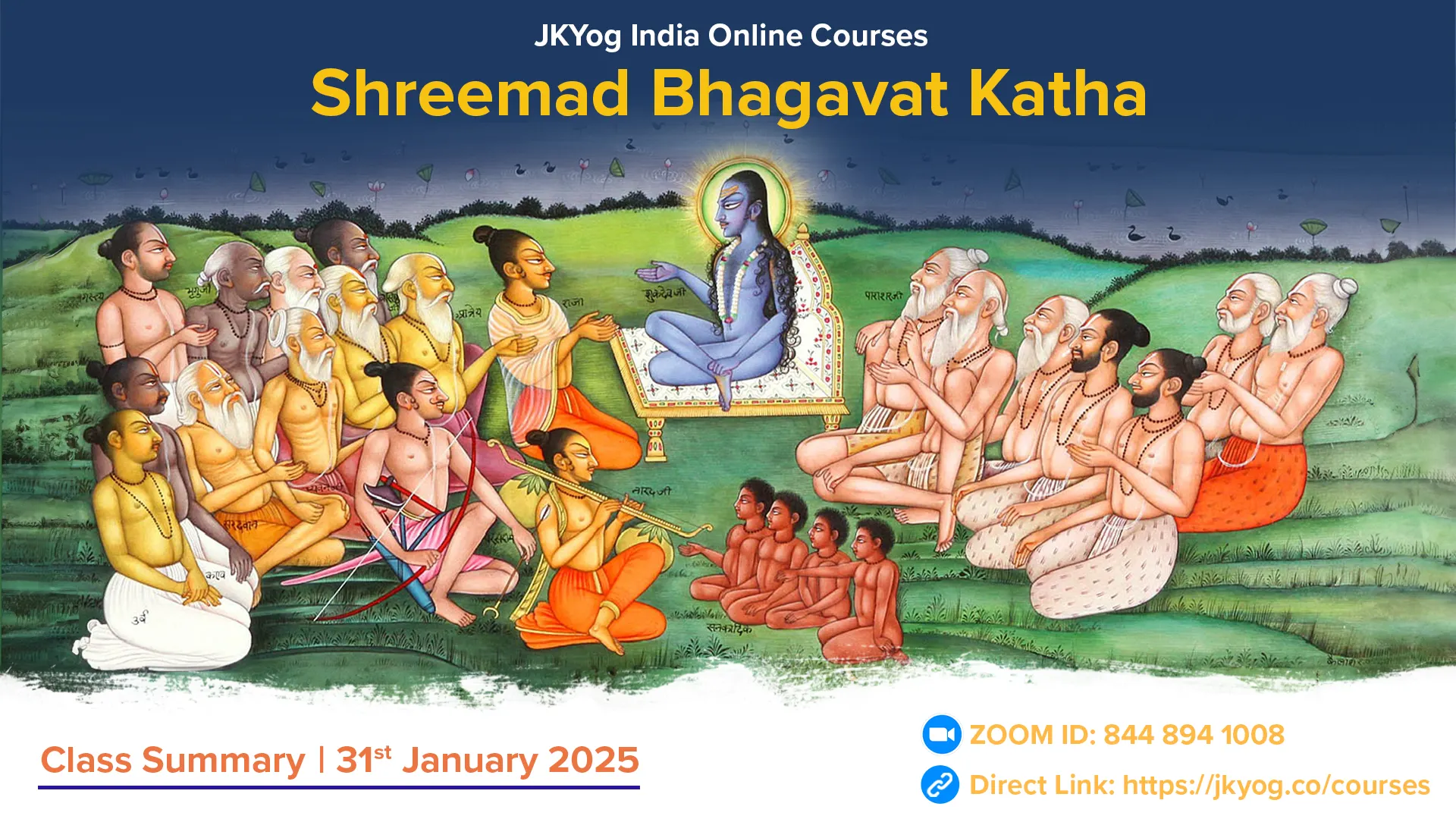

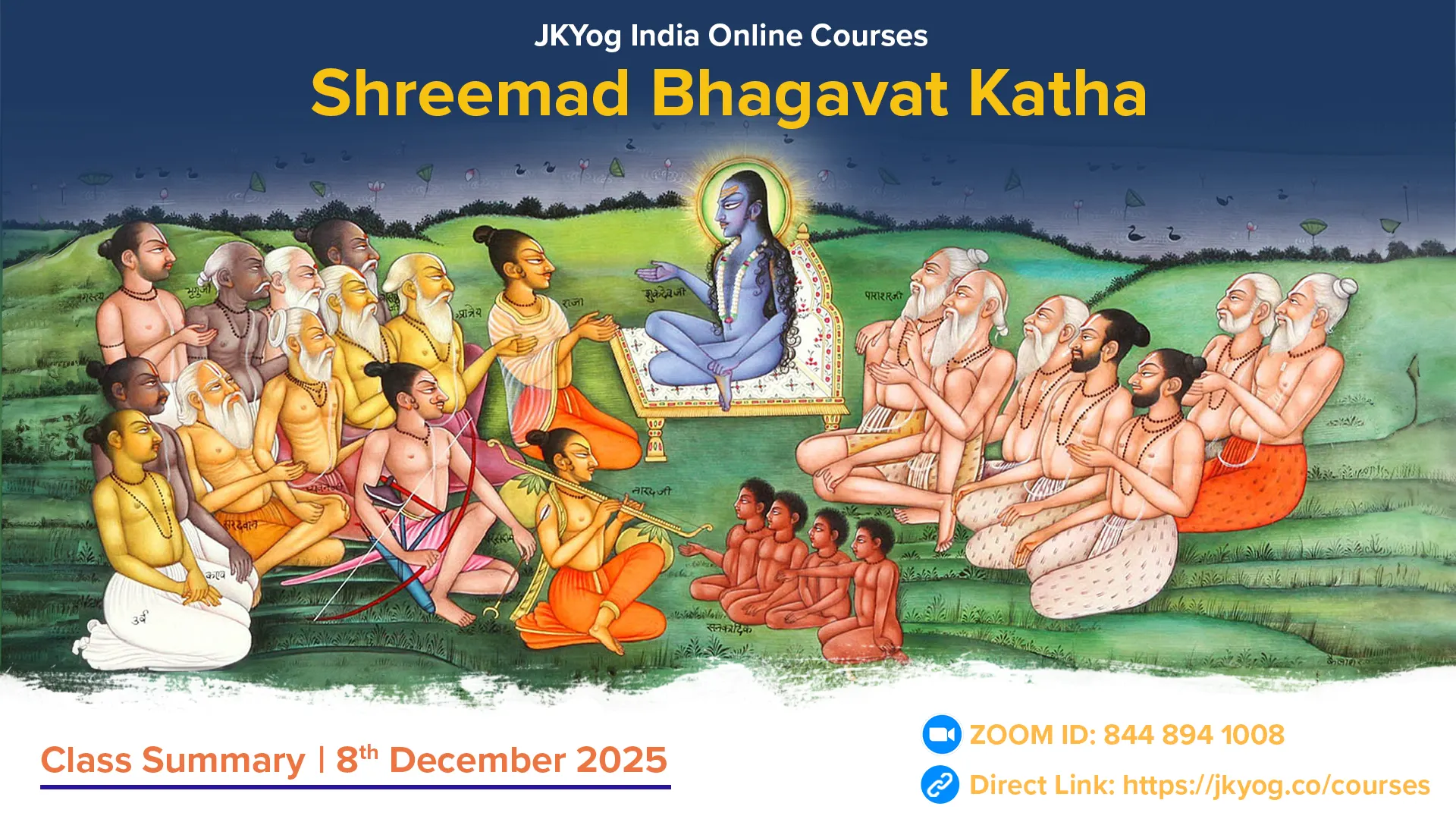
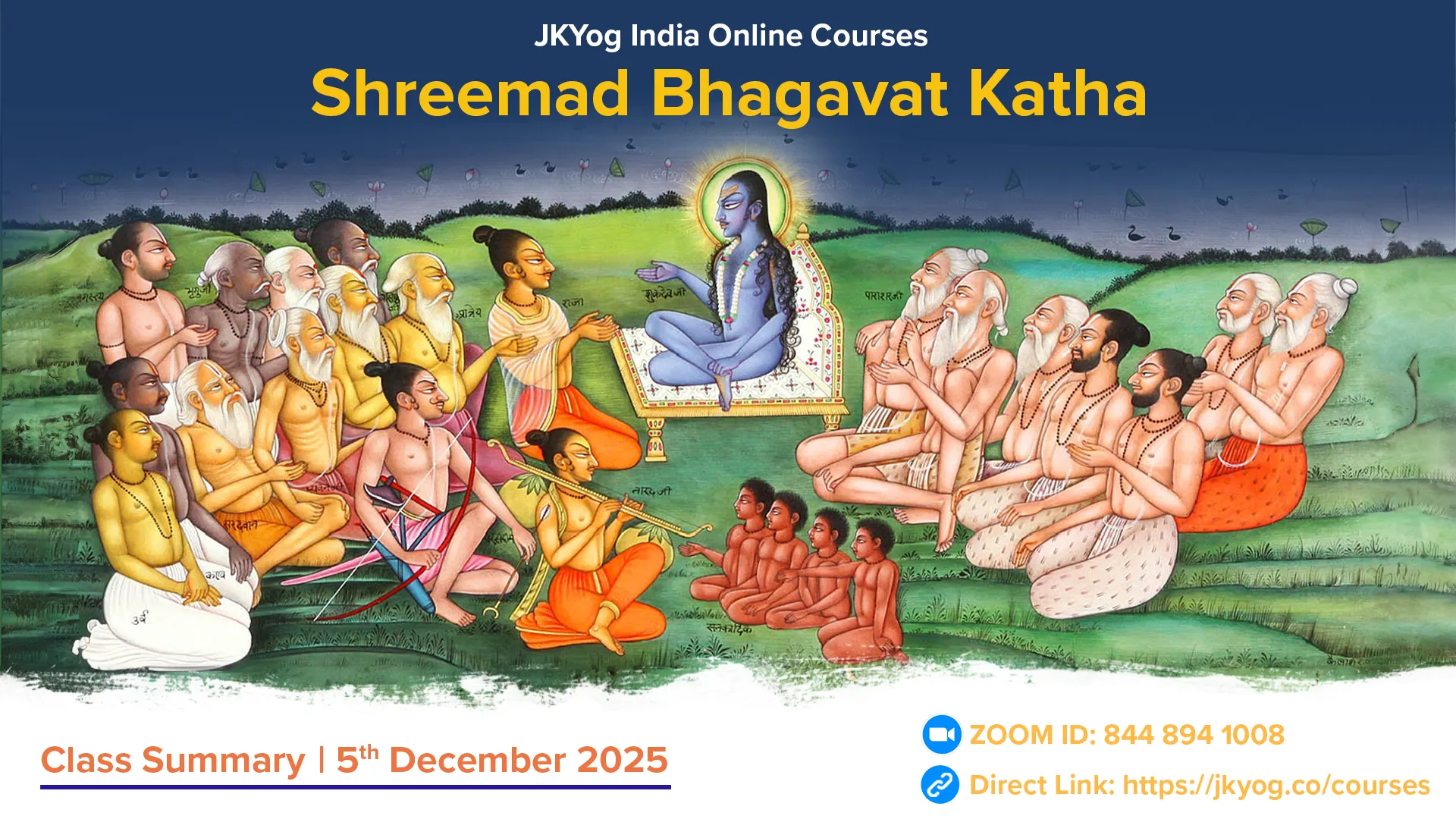
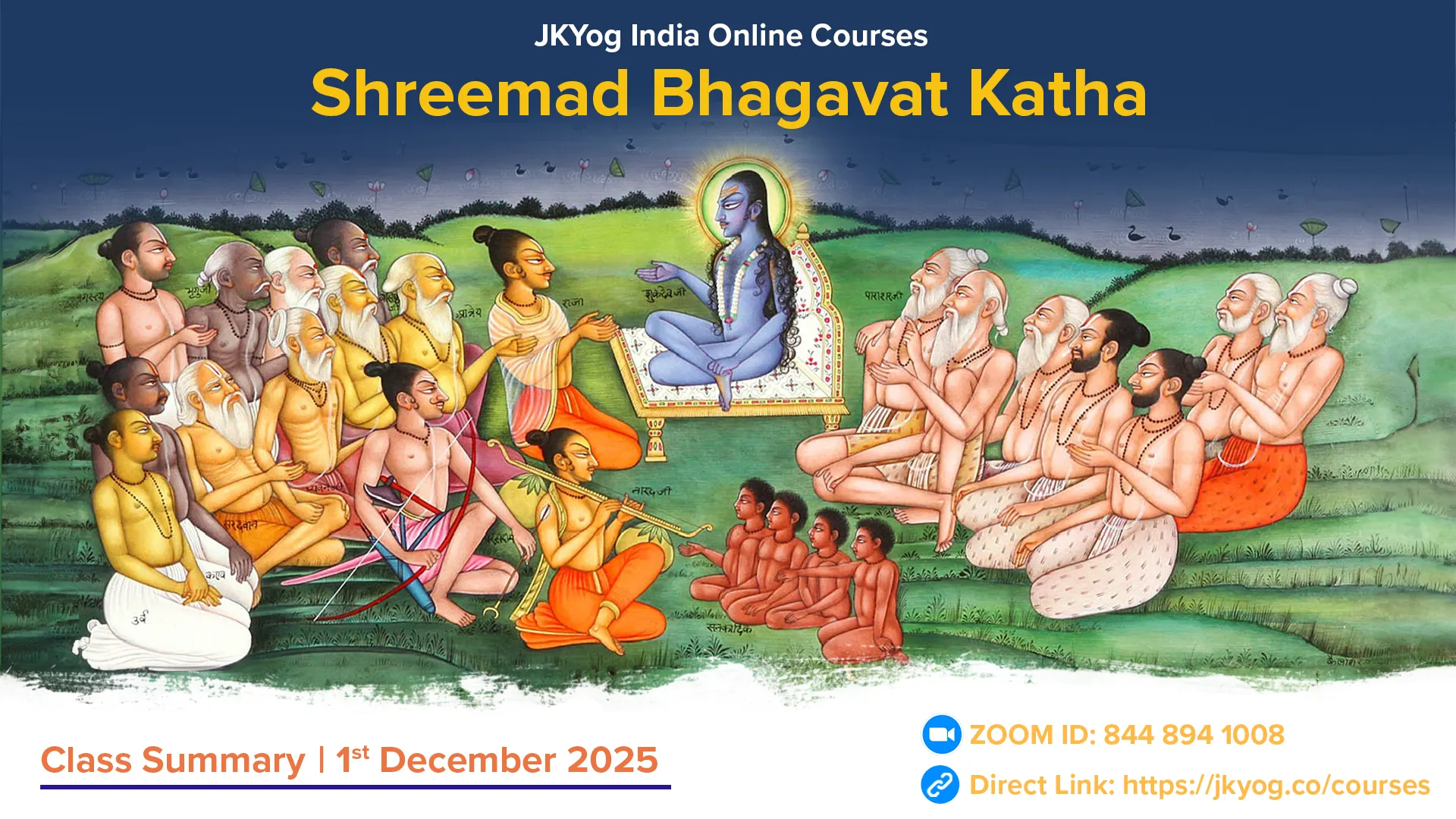
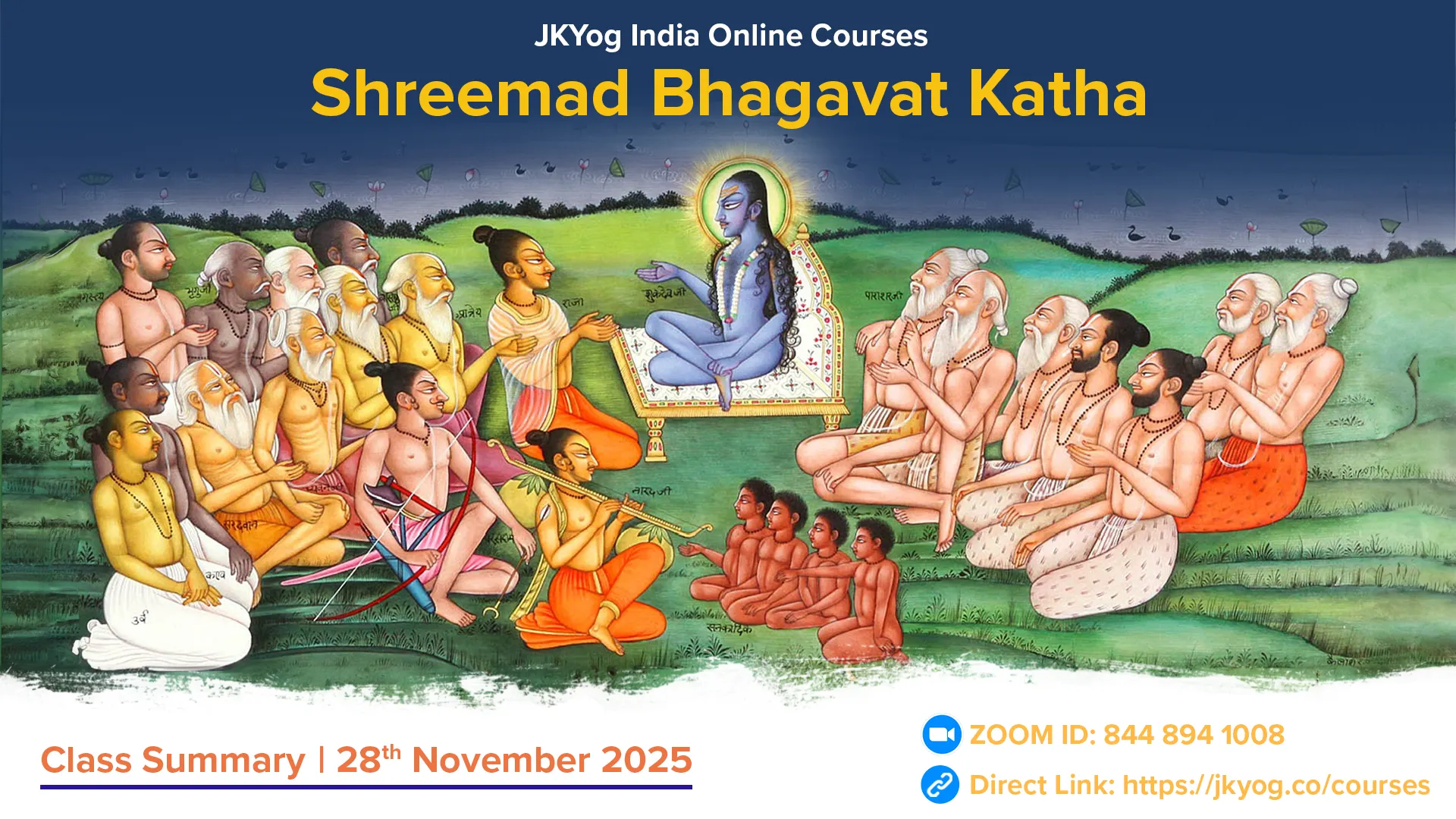
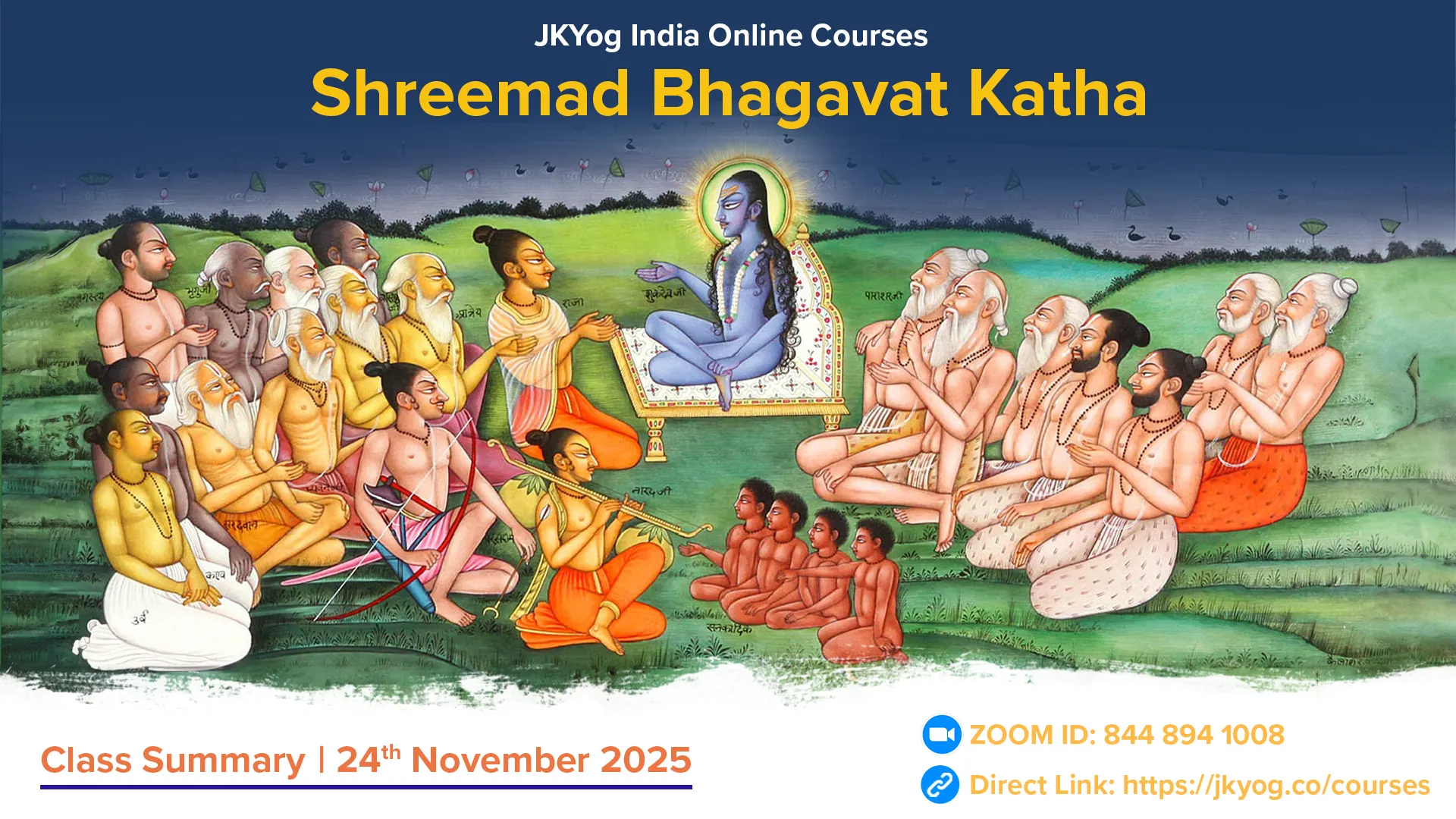

What our Participants say